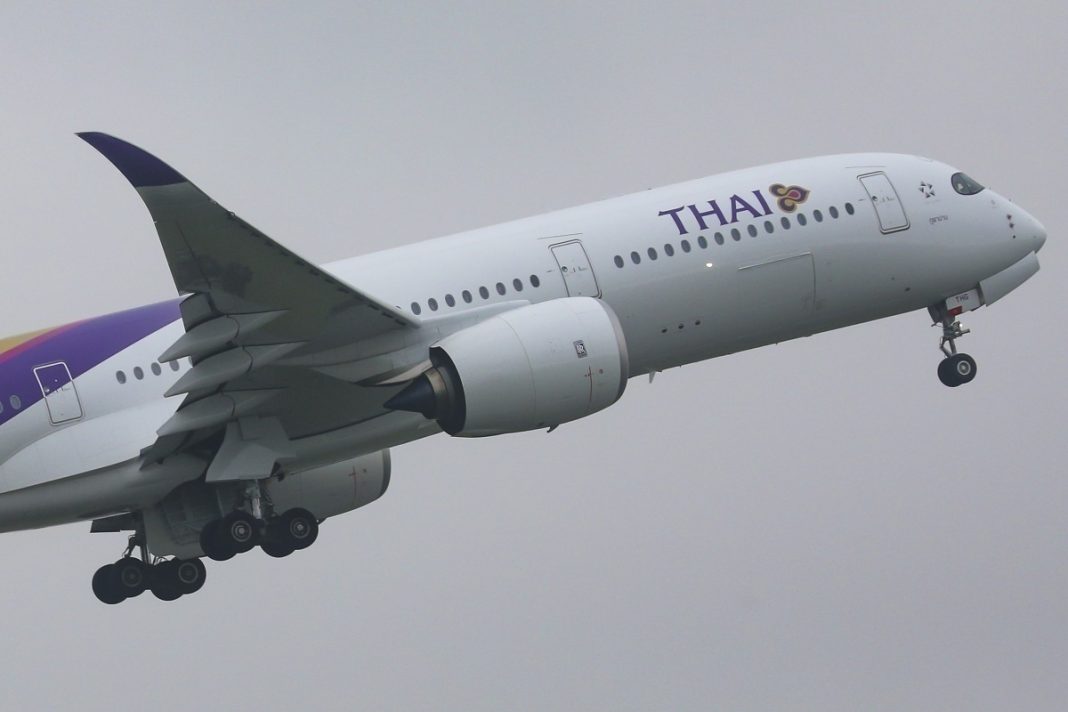The first half of 2020 was rough for Thai Airways. The flag carrier lost a staggering $900 million, and, to make matters worse, the auditor for the airline could not reach a conclusion on the airline’s financial statements leading to the carrier’s suspension of trading on the stock market.

Thai Airways’ first half losses
Thai Airways released its first and second quarter results last week. In the first quarter, Thai Airways walked away with a net loss of 5.3 billion baht (~$170 million) in the second quarter compared to a 22.7 billion (~$730 million) net loss in the first quarter. Combined, this is a staggering $900 million net loss for the first half of 2020.
The airline cited the travel restrictions posed by the ongoing crisis, which limited demand for domestic and international travel. Starting in February, Thai Airways suspended or reduced flights to China. In March, there were further international reductions across East and Southeast Asia, leaving Thai serving only the core cities. In late March, Australian flights were suspended. Since then, it has been a downward trend for the airline with operations currently suspended through September 30th.

Auditor reaches no conclusion on results
Thai’s auditor, Deloitte Touche Tohmatsu Jaiyos Co. Ltd, did not reach a conclusion on the airline’s financial statements for the first half of 2020. The auditors cited three concerns.
First up was the airline’s lack of liquidity. The airline has been operating at a loss since 2013. With seven years of losses piling up plus substantial debts, Thai Airways is faced with a black predicament due to its lack of financial liquidity.

In addition, the evolving health crisis has severely limited Thai’s operations. The airline is making slight movements forward with Thai Smile Airways operating some limited flights, but Thai Airways is nowhere near back to its traditional and robust flight schedule. This limits the airline’s options to earn revenue, which, in turn, contributes to the carrier’s liquidity problems.
Lastly, the company has entered into a rehabilitation process under the Central Bankruptcy Court. The rehabilitation plan will be submitted soon as the hearing date on the petition is scheduled for August 17th. Once that plan is submitted, it has to be approved by creditors, and then the company has to enact the plan.

However, in light of Deloitte Thailand’s lack of a conclusion on the airline’s financial statements, the shares of Thai were suspended for trading on the stock market. Back in July, Thai Airways defaulted on nearly $3 billion worth of debt.
So what comes next?
Now, Thai Airways has to move forward with its rehabilitation process. With seven years of losses, it is clear the airline needs to make significant changes to its operations. Moving forward, the reality is that international travel demand will remain depressed for a few years. In the meantime, until travel levels return to 2019 levels, Thai Airways needs to plan out how it will return to profitability, reduce inefficiencies, and be prepared to handle passengers in the future.

First and foremost, the airline has to make some fleet decisions. Thai Airways has a fleet of 75 aircraft, according to Planespotters.net. The oldest of these are the Boeing 747s. While Thai Airways did chart out plans to retire the type from its fleet by 2024, that timeline may be moved up. Another casualty could be the Airbus A380, which some other airlines have waved goodbye to amid the ongoing crisis. If the airline can’t fill the planes, then paying for fuel for four engines is not ideal. This will help streamline the airline’s fleet and, perhaps, lead it closer to profitability– if not into it.
What do you envision for Thai Airways’ future? Let us know in the comments!
[ad_2]
Source link


